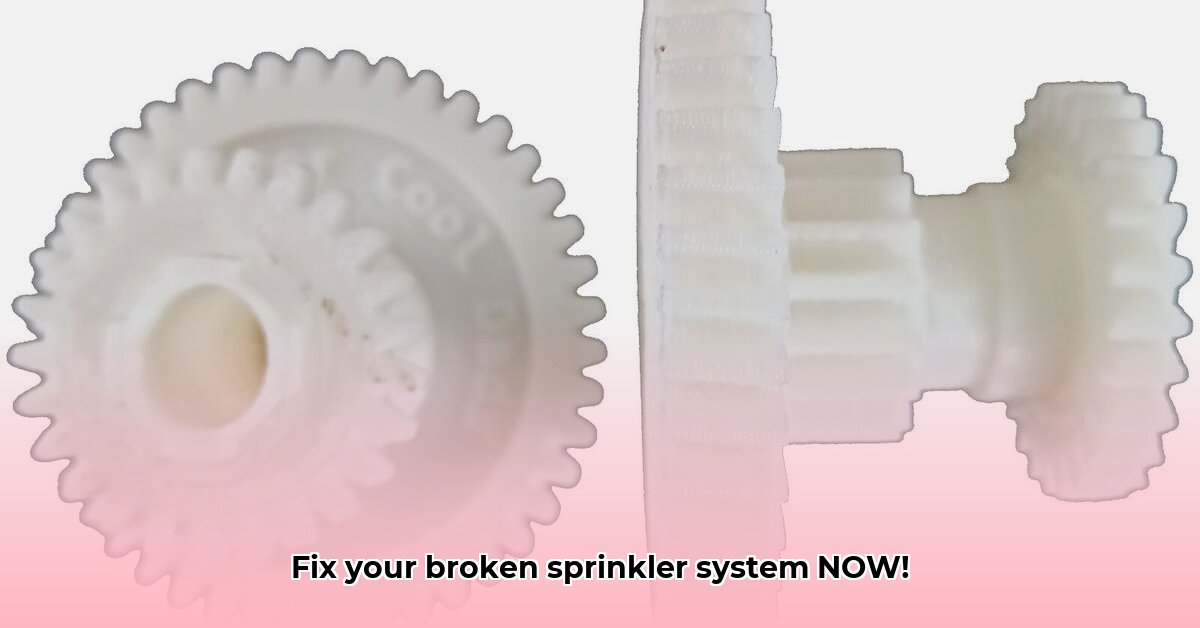
Parts for Tractor Sprinklers: Selection, Installation, and Maintenance
Maintaining peak performance of your tractor sprinkler system requires understanding its components and implementing a proactive maintenance strategy. This guide covers selecting the right parts, troubleshooting common issues, and performing essential maintenance to ensure efficient irrigation and healthy crop yields. We will focus on Nelson tractor sprinkler parts, but the principles apply broadly to most systems.
Understanding Your Sprinkler System: Beyond the Pipes
Before tackling specific parts, grasp the overall system. Consider it a sophisticated irrigation network: each component plays a vital role, and a single failure can cause widespread problems.
Key Components:
- Pipes and Fittings: These transport water; leaks waste water and reduce yields. Regular inspections are vital.
- Nozzles: These control water distribution and spray patterns; clogs cause uneven watering. Regular cleaning is essential.
- Wheels and Axles: These ensure even sprinkler movement; wear leads to uneven watering.
- Pumps and Motors: These power the entire system; maintenance prevents costly downtime.
- Control Valves: These regulate water flow; malfunctions disrupt watering.
- Drive Shaft and Gears (if applicable): These components are critical for the system's mechanical operation. Regular lubrication is essential.
Choosing the Right Parts: A Step-by-Step Guide
Selecting the correct parts is crucial. Using the wrong components can damage your system, waste water, and lead to costly repairs.
- Identify the Problem: Precisely determine the faulty part. Photos are invaluable.
- Manufacturer's Markings: Note the manufacturer's name and model number (usually stamped on the part).
- Prioritize Quality: Investing in superior parts minimizes replacements, saving you money and potential crop losses. Are higher upfront costs justified by longer lifespan and enhanced performance? Often, yes.
- Compatibility Check: Verify the new part's compatibility with your existing system.
- Read Reviews: Consult online reviews to gain insights into a part's reliability and performance.
Troubleshooting Common Sprinkler Problems: Quick Fixes for Major Issues
Many problems have simple solutions. Let's address common issues:
- Low Water Pressure: This could result from clogged nozzles, pipe leaks, or pump problems. Check each sequentially.
- Uneven Water Distribution: This often signals misaligned nozzles or faulty wheels.
- Leaks: Locate the leak; replace the damaged pipe or fitting.
- Motor Problems: Check for loose connections or inadequate lubrication. Consult a specialist for major repairs.
- Drive Shaft Issues (if applicable): Inspect for worn gears, bent shafts, or damaged couplings. Replacement is often necessary.
Maintaining Your System: Preventative Care
Regular maintenance is essential for equipment longevity. It's preventative medicine for your irrigation system.
- Seasonal Checkups: Inspect the entire system before and after each irrigation season.
- Cleaning: Regularly clean nozzles and filters to prevent clogs and ensure even water distribution.
- Lubrication: Lubricate moving parts according to the manufacturer's instructions.
- Address Small Problems Promptly: Small issues can escalate into major problems requiring more extensive (and often more costly) repair.
Safety First: Working Safely with Your Sprinkler System
Safety is paramount when working with irrigation equipment. Follow these guidelines:
- Turn Off the Water: Always switch off the water supply before working on any components.
- Caution Around Moving Parts: Be cautious around moving parts, especially during operation.
- Seek Professional Help: Don't hesitate to consult a qualified professional if you lack the expertise for a repair.
Sustainable Irrigation Practices: Environmental Responsibility
High-quality parts are essential for sustainable agriculture. Efficient irrigation conserves precious water resources. Consider water-saving technologies to enhance your system's environmental impact. Durability minimizes waste, making your operation both eco-friendly and cost-effective.
Finding Reliable Suppliers: Sourcing Your Parts
Source parts from online retailers, agricultural supply stores, and equipment dealers. Verify the supplier's reputation and part compatibility before purchase.
Addressing Potential Supply Chain Disruptions for Nelson Irrigation Parts
Extended lead times for Nelson parts are a growing concern. Several factors contribute to these disruptions:
- Raw Material Shortages: Scarcity of resins and microchips drives up prices and extends lead times.
- Global Logistics: Shipping delays and increased transportation costs add to the problem.
- Labor Shortages: Fewer workers slow production and shipments.
Mitigating Supply Chain Risks:
- Diversify Suppliers: Utilize multiple suppliers to avoid dependence on a single source.
- Strategic Stockpiling: Maintain a safety stock of frequently used parts.
- Proactive Communication: Maintain close contact with suppliers for early warnings of potential disruptions.
- Maintenance Programs: Preventative maintenance extends component lifespan, reducing replacement needs.
- Explore Alternatives: Consider substitute parts and technologies less vulnerable to supply chain interruptions.
This guide provides a comprehensive approach to managing your tractor sprinkler system. Proactive maintenance ensures efficient irrigation, minimizes downtime, and ultimately leads to improved harvests. Remember, a little preventative maintenance is far less expensive than major repairs!